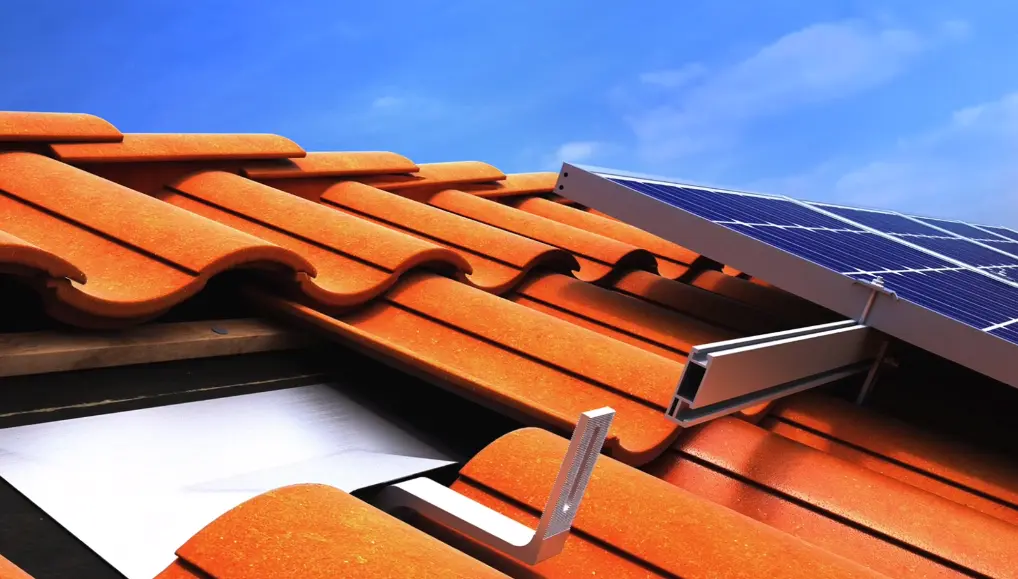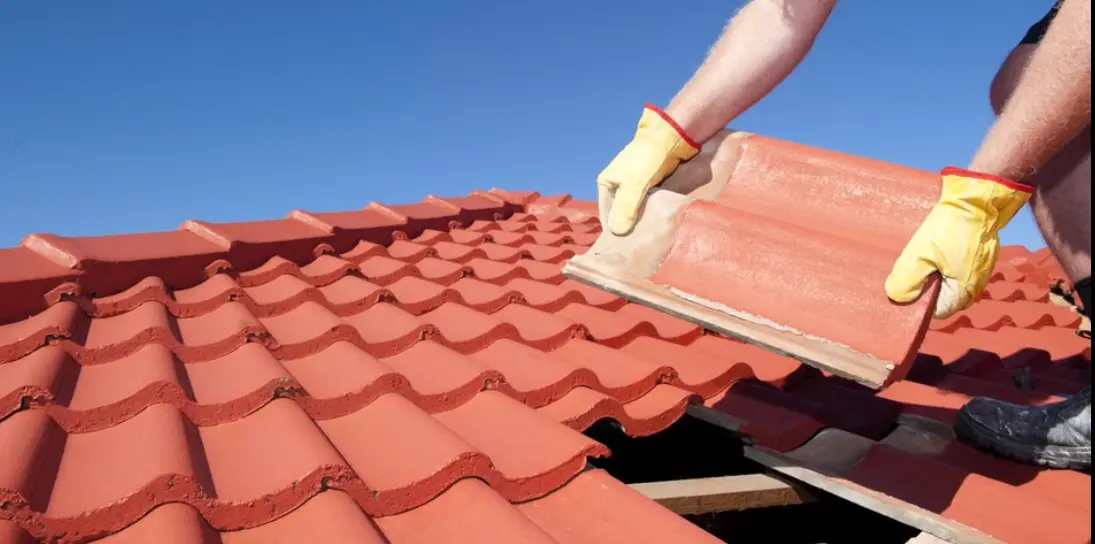Installing Solar Panels on Concrete Tile Roofs
Installing solar panels on concrete tile roofs can be affected by various factors. These factors will impact the design and cost of your solar system.
Each type of roof requires a different installation approach. For example, lightweight tile roofs come with specific challenges and considerations for solar installers. Here are some key points to know before installing solar panels on a tile roof.
What makes solar installations on lightweight tile roofs unique?

Spanish or terra cotta tiles are common on roofs in the western and southwestern United States. They consist of cement or clay tile roofs. These tiles typically come in three shapes: “W,” “S,” or flat.
Tiles that weigh less than nine pounds per square foot are lightweight. If you walk on your tile roof, be careful because the tiles can easily crack or break. They are brittle and repairs or maintenance can damage them.
We do not recommend installing solar panels directly on a lightweight tile roof. These tiles are strong in bad weather, but not strong enough for solar panels. The process can make tiles break or crack, which can weaken the roof and cause leaks and damage. Drilling into these tiles can also harm the underlayment, the protective layer beneath the tiles or shingles.
Certain solar installation professionals choose to take out individual tiles and substitute them with unique tile replacement brackets. While this approach may be suitable for heavyweight tiles, lightweight tiles that remain in place are still vulnerable. Even if the installation team successfully mounts the solar panels without breaking the tiles, future problems can arise. Lightweight tiles are fragile, and vibrations from wind passing between the panels and the racking system can cause issues over time.
Advantages of Solar Panels on Concrete Tile Roofs
Adding solar panels on concrete tile roofs offers several advantages. Let’s explore these benefits in detail.
Durability Meets Sustainability
Concrete tile roof types have a reputation for being more durable than other roofing materials. Installing solar panels on these roofs reduces reliance on pollution-producing energy sources, making your home more sustainable. Designers create solar panels to withstand severe weather conditions.
Aesthetic Integration
Solar panels have evolved in design over the years, becoming slimmer and more visually appealing. They can seamlessly blend into concrete tile roofs, enhancing the overall look of your home. Many homeowners find solar panels on tile roofs to be particularly attractive.
Energy Savings
One of the main reasons homeowners install solar panels is to reduce electricity bills. Solar panels take sunlight and turn it into electricity.
More sunlight means more electricity from the panels. This generated electricity can power your home, reducing your need for traditional energy sources. The EPA says that if you install solar panels, you can save money on electricity. The average American household can save between $600 and $1,500 per year.
Environmental Benefits
Solar panels can reduce CO2 emissions by 4,000 to 9,000 pounds per household annually. This is crucial in the battle against climate change. Solar energy is both cost-effective and environmentally friendly, greatly reducing greenhouse gas emissions.
Solar power is a clean and sustainable energy source, as it generates electricity without releasing harmful chemicals. By choosing solar energy, you can contribute to a more sustainable and safer future for the next generations.
Increased Property Value
As awareness of sustainability grows, there is a rising demand for eco-friendly and sustainable buildings, offices, and homes. This increased demand boosts property values. Therefore, installing solar panels can enhance your building’s resale value.
Key Factors to Consider for Solar Panels on Concrete Tile Roofs

When installing solar panels on concrete tile roofs, you need to consider several important factors.
Professional Installation
Solar panel installations on concrete tile roofs are vulnerable to severe weather conditions, including high winds. Ensuring the structural integrity of the installation is crucial. Hiring a specialist who knows how to install solar panels correctly is important to avoid any potential damage.
Weight Management
Every roof designer designs it to support a specific weight. Exceeding this capacity can result in structural failure, which may pose serious risks. Knowing the load-bearing capacity of your roof is crucial to ensure that the weight of the solar panels does not surpass this limit. Proper installation on concrete tile roofs requires careful consideration of weight distribution.
Regular Maintenance
The efficiency of solar panels depends on their ability to capture sunlight effectively. Regular maintenance and cleaning are essential to prevent dust and debris from obstructing sunlight. The National Renewable Energy Laboratory (NREL) recommends cleaning solar panels every 6 to 12 months for optimal performance.
Disadvantages of Installing Solar Panels on Concrete Tile Roofs
Higher Initial Costs One of the main reasons people hesitate to install solar panels is the high initial cost. However, it is important to view this as a long-term investment. Solar panels are a more cost-effective option than electricity bills over 20 years.
The initial investment in solar panels is lower than the cost of electricity bills over the same period. Comparing the two costs shows that solar panels are a better choice financially. Over time, the savings on electricity bills can be substantial.
Choosing the Right Solar Panels
Three primary types of solar panels to consider are:
1. Monocrystalline
- High efficiency
- Good choice if you have limited roof space
- Maximum power output
2. Polycrystalline
- Slightly less efficient than monocrystalline panels
- More affordable
- Suitable if you have ample roof space
3. Thin-Film
- Lightweight and flexible
- Less efficient than crystalline panels
Enhancing the Performance of Solar Panels on Concrete Tile Roofs
Numerous techniques are available to improve the performance of solar panels installed on ceramic tile rooftops.
- Tilt and orientation are crucial for maximizing solar panel efficiency on cement tile roofs. Position your panels towards the sun to capture maximum sunlight.
- The DOE states that solar panels angled correctly can produce 25% more electricity than flat panels.
- Shading Ensure there are no obstructions to sunlight on your solar panels. Even minimal shading can significantly reduce efficiency.
- Monitoring & Maintenance After properly orienting and shading your solar panels on concrete tile roofs, regular maintenance is essential. Routine maintenance and monitoring can enhance the effectiveness and longevity of solar panels on ceramic tile roofs. Without proper maintenance, the lifespan of solar panels may decrease, and technical issues may arise over time.
- Carrying out regular maintenance is important to ensure optimal performance.
